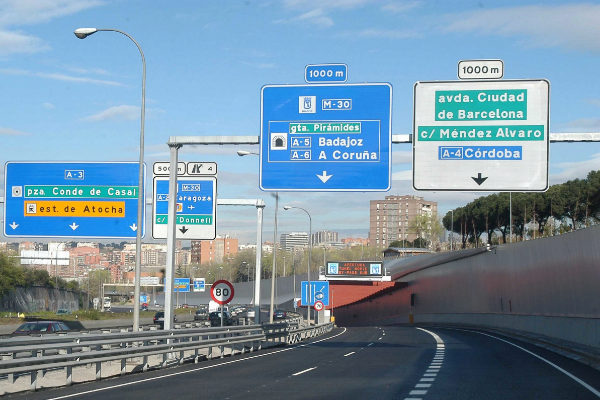- Road Safety. What are the traffic violations that involve the loss of card points?
- Mobility Accidents slow down the autonomous car
- Traffic: Scooters can also take you ... to jail
Up to 77,276 people were slightly injured in accidents that occurred in the city in 2017, 22% more than in 2013 , when the increase in their roads was only 2% according to data collected in the II Red Points Ranking published by the Line Foundation Direct As the report reflects, the most common accident in the city is a rear-end collision or a side impact, which occurs at crossings and roundabouts due to distractions and not respecting safety priority or distance.
Cervical sprains (65%), herniated discs (15%) and knee sprains (10%) are the most common injuries in urban traffic accidents. The Línea Directa Foundation has made available to the public its website for the denunciation of dangerous points throughout the Spanish geography, whose location will be transferred to the competent administrations for its review, its general director, Francisco Valencia, informed in a press conference.
What are the most dangerous points?
The M-40 ring road in Madrid as it passes through the El Pardo tunnels and exits to Mercamadrid and Diagonal Avenue , between Pius XII square and Doctor Marañón, near Barcelona's Camp Nou, are the urban areas of Spain with more concentration of serious accidents.
The third most dangerous area of the Spanish street is the Recoletos-Castellana axis, specifically the areas of Cibeles, Nuevos Ministerios and the Santiago Bernabeu stadium in Madrid according to the II Red Points Ranking published by the Direct Line Foundation.
The report analyzes almost 500,000 urban and interurban accidents recorded by the DGT between 2013 and 2017 and more than 70,000 serious accidents in urban areas and bypasses served by Línea Directa, those in which the vehicles involved have not been able to continue driving, including in many cases injured.
The study shows that accidents with victims in the city are shot throughout Spain and already double those registered on interurban roads.
After the first three red points of Spain referred to, the Top 15 is completed in this order by the following: Alcalá street in Madrid, in the Sales bridge and between the numbers 600 and 700, the M-30 in Madrid at nodes south and from Manoteras, the avenue of Denia de Alicante at the exit of the tunnel at the height of number 75, the SE-30 of Seville as it passes through the V Centenario bridge .
In addition, the Avenida del Cid de Valencia at the height of the number 150 , the avenue of the Mayor Alfonso Molina de A Coruña in the area of the Coliseum , the avenue of Tournament of Seville next to the bridge of the Barqueta (Magic Island) , the avenue of Don Juan de Borbón de Murcia at the confluence with that of the Kingdom of Murcia (Los Cubos), Avenida Blasco Ibáñez de Valencia in the area of the intersection with Blas de Lezo.
Finally, the Kansas City avenue of Seville in the area next to the A-4 and Santa Justa and the shopping center areas of the Mediterranean avenues of Almeria and Andalusia of Malaga.
Between 2013 and 2017, accidents in the city with victims increased by 24 percent, compared to the 0.5 percent increase on interurban roads. In fact in the last year there were almost 65,000 accidents in the city compared to 37,000 happened on the road, almost double.
13% more deaths: 2,360 victims
As for the mortality data in that period, 2,360 people lost their lives in urban traffic accidents , registering an increase of 13% in 2017 compared to 2013, a rate of increase that doubles that of interurban roads, and practically half of The dead in town were pedestrians.
During that period, 24,000 seriously injured people were registered in traffic accidents in the cities, and in particular 4,780 in 2017, which represents a decrease of 2.5 percent compared to 2013, a decrease lower than that registered on roads 8 percent
According to the criteria of The Trust Project
Know more- Engine
- Spain
- Seville
- DGT
- Traffic
The final interview Pastora Soler: "Politics? Better music to tame the beasts"
Energy30 years of the most serious nuclear accident in Spain: "It was chaos. We were not prepared"
Catalonia "They call us settlers and they say that Columbus is Catalan"

